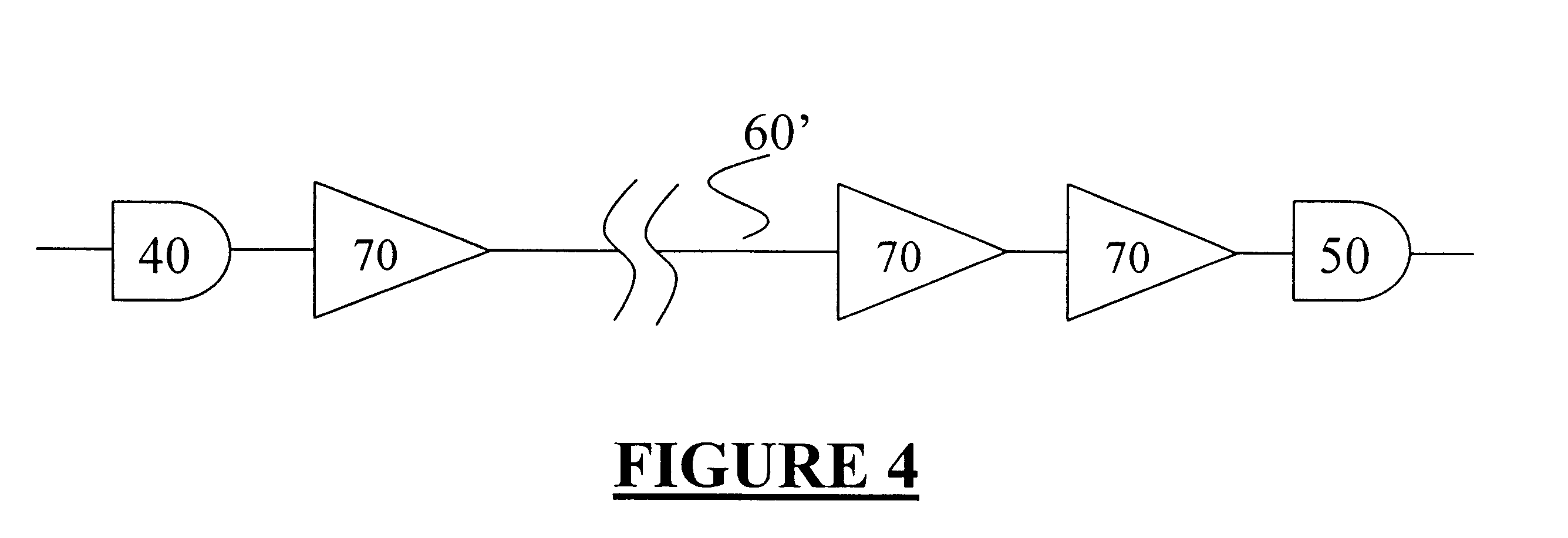Timing optimization in presence of interconnect delays
a timing optimization and delay technology, applied in the field of digital logic design systems, can solve the problems of inconvenient timing optimization, inconvenient timing optimization, and inability to accurately formulate the interconnect delay and optimal buffering scheme to minimize i
- Summary
- Abstract
- Description
- Claims
- Application Information
AI Technical Summary
Problems solved by technology
Method used
Image
Examples
Embodiment Construction
As is known in the art, the theory of logical effort represents the delay D.sub.gate through a simple logic gate 10 as shown in FIG. 1, driving a capacitive load 20 as:
D.sub.gate =.tau.(g.sub.gate h.sub.gate +p.sub.gate) (1)
where g.sub.gate is the logical effort of the gate, h.sub.gate is the electrical effort and p.sub.gate is the intrinsic delay of the gate. .tau. is a technology constant defined as the delay of an ideal inverter with no intrinsic delay, driving another ideal inverter.
The logical effort g.sub.gate represents the computational complexity of the gate and measures how much weaker it is in current drive compared to an ideal inverter with the same input capacitance. It compares the characteristic time constant (product of the output resistance and input capacitance) of a gate with that of an inverter. Logical effort is a function of the topology of the transistor interconnections but not of transistor sizes, and is given by: ##EQU1##
where gate_min refers to the minimum...
PUM
 Login to View More
Login to View More Abstract
Description
Claims
Application Information
 Login to View More
Login to View More - R&D
- Intellectual Property
- Life Sciences
- Materials
- Tech Scout
- Unparalleled Data Quality
- Higher Quality Content
- 60% Fewer Hallucinations
Browse by: Latest US Patents, China's latest patents, Technical Efficacy Thesaurus, Application Domain, Technology Topic, Popular Technical Reports.
© 2025 PatSnap. All rights reserved.Legal|Privacy policy|Modern Slavery Act Transparency Statement|Sitemap|About US| Contact US: help@patsnap.com



